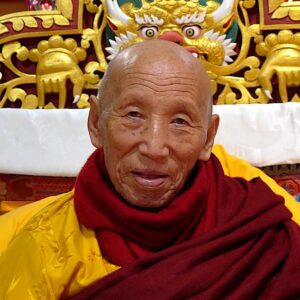Does Posture Really Matter?
Isn’t it important to be comfortable?
Why can’t we meditate just lying down? In this video clip from Martha’s Vineyard, Massachusetts, Rinpoche answers a student’s question about why meditation posture matters.
Rinpoche uses the example of running. He suggests that we start small. We need to keep trying and then it becomes more natural. If we train little by little, we can eventually run 10 miles. We can’t do that by just lying down and thinking, “I am running.” Posture is a skillful means to help our meditation just like a proper running gait helps a runner.
Proper Conditions
Posture does matter! We need proper conditions in order to meditate. In order to make the mind steady, we need to make the body steady. Posture brings sharpness. In the beginning, it is particularly important to train properly.
Gradually we can sit for longer and longer periods. Once we have a good base, then it becomes possible to truly practice in any position, but this is not as easy as it might seem. To be honest, most of us would simply fall asleep if we attempted to meditate lying down!
Internal Body
Technically, according to Tibetan medicine, the nerves of the body are connected to the breath. And the breath is connected to the emotions. When we cross our legs, the internal winds calm down. The straight, upright position moves the winds into the central area. This brings calmness. The correct wind flow brings clarity, sharpness, and vastness. Rinpoche reminds us that the upright posture has been used for over two thousand years and it is effective!
Somananda Yogi Demonstrates Variations of Meditation Posture
The important points are a straight, but not tense, back, and a slightly tucked chin. Any or all of the postures are aids to meditation, and the most beneficial is said to be the full vajra position. If you are physically able to slowly and gradually work toward this position, it will be good support for your practice.
- Meditation seated in a chair: Make sure that if your feet do not comfortably reach the floor, you should place a firm cushion beneath them for support. Note that the hands can be in a meditation position on the lap or on the thighs. Also notice that the spine is straight, not leaning back against the chair.
- Meditation in half vajra posture:
- Meditation in full vajra posture: Here is the posture from the front and the side.










Responses
[…] meditation posture brings us back to our cushions regularly. In our blog post, Meditation Posture: Sharpness, you can find specific instructions to help you develop correct […]
[…] You can find a more detailed description and videos showing meditation posture alternatives here. […]